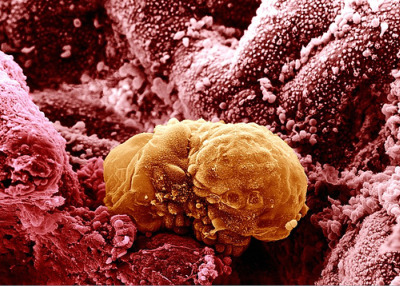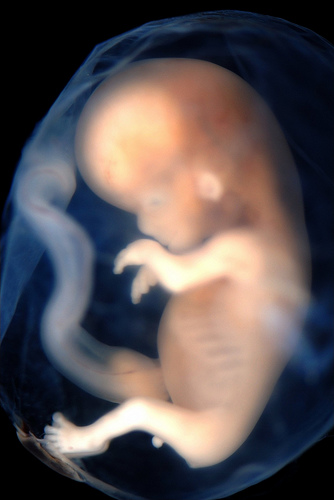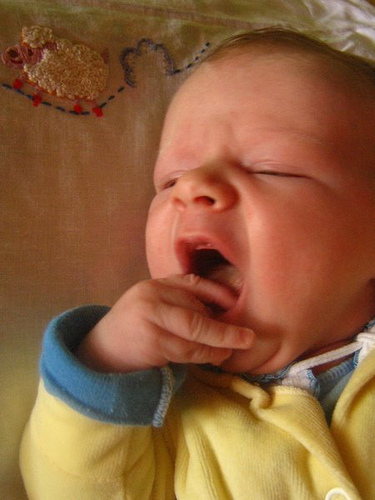Implantation Finally!
Another three to four days pass with the zygote dividing in the uterus, depending on the uterine secretions. By this point the endometrium has thickened due to the increased progesterone levels, becoming an environment more accommodating for a developing embryo. This involves vascular development and accumulation of glygocen stores.
The next stage the embryo reaches is the blastocyst, and it is at this stage that implantation can finally occur. The blastocyst is a mass of cells with a fluid filled cavity at one side (called the blastocoel), it is surrounded by a layer called the trophoblast which expresses specific signals in its extracellular matrix, which anchor it to the corresponding signals on the endometruim. The glands of the endometrium not only release nutrients for the embryo but also release a soup of chemicals including mucins, prolactins and collagens which are important for implantation. The endometrium develops a complicated extracellular matrix (ECM) which allows initial anchoring of the embryo to it. Currently research continues into the actual chemical mechanism involved in implantation.This picture shows an embryo at 6 days sitting upon the uterus lining.

Implantation occurs in 4 stages:
1) Expression of specific signaling molecules by the trophoblast cells allowing the blastocyst to attach to the ECM of the endometrium.
2) Release of proteases from the trophoblast breaking down the endometrial cells, providing more nutrients for the embryo, whilst also creating space, into which finger-like trophoblastic processes, known as pinopodes can anchor themselves.
3) The blastocyst in this way burrows further into the uterus lining.
4) The cell membranes of the trophoblast break down so that it becomes a multinucleate syncytium. This part of the embryo forms the embryonic part of the placenta. The surface of the uterus lining covers the embryo upon completion of implantation.
Until the placenta proper is formed the syncytial trophoblast continues to digest the endometrium with its proteases, to feed the embryo. The formation of a barrier between the developing embryo and the mother is essential. If their blood or any tissues were to mix, rejection of the embryo would ensue as the mother's immune system would detect their cells' antigens as foreign. Only half of the embryo's genetic makeup is the mother's.
Picture courtesy of Yorgos Nikas found at https://www.flickr.com/photos/lorelei-ranveig/2294096613/ under creative commons licence


